‘Look for wires at your feet’: In Ukraine, investigators seek evidence of war crimes
Two women were found dead in the wood, and just as in pre-war times, forensic investigators head to the scene of the crime, reports Isabelle Khurshudyan
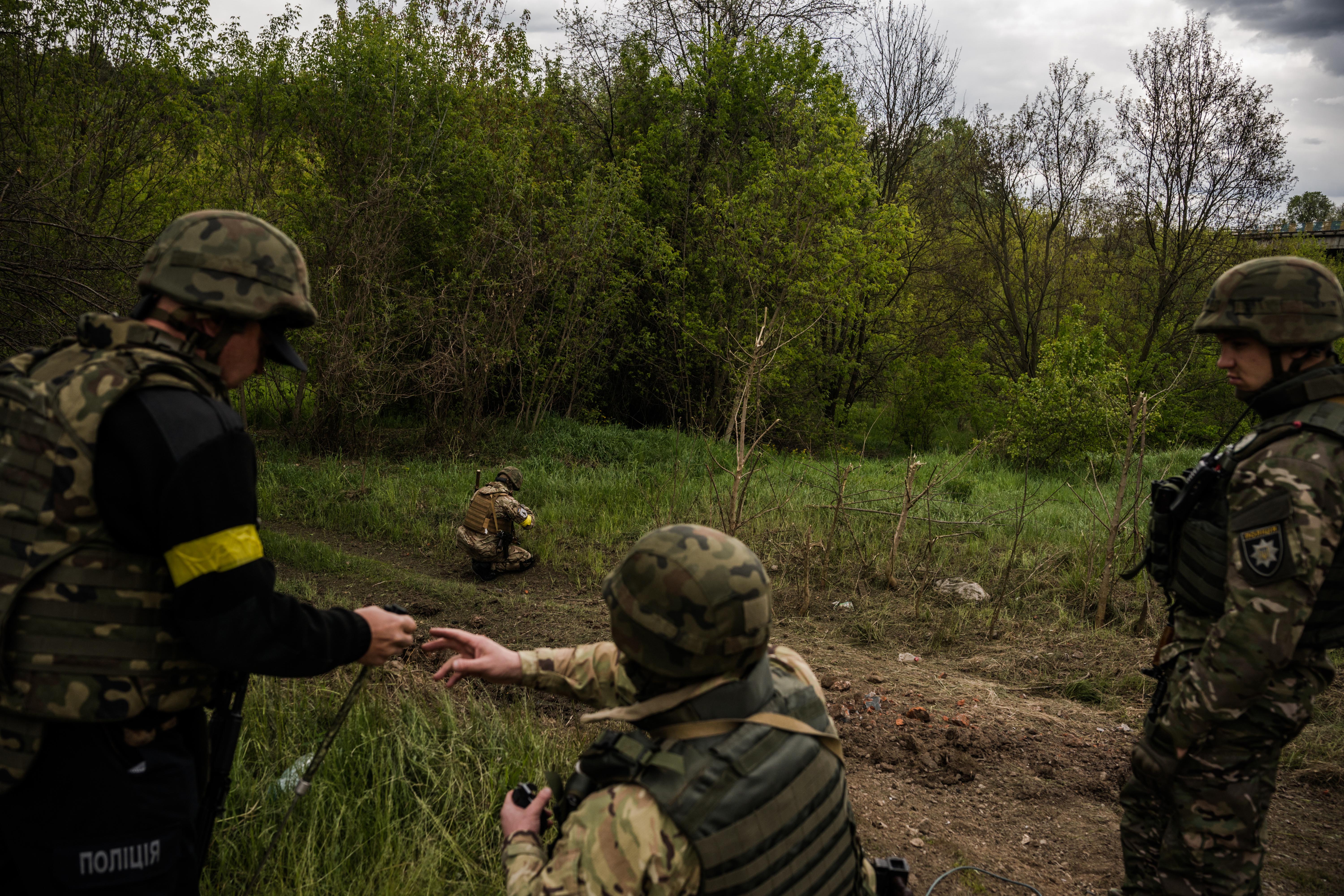
To get to the crime scene, the police investigators drove about 30 minutes northeast of downtown Kharkiv – past neighbourhoods in ruins, destroyed Russian military vehicles, a field littered with blast craters, and plumes of dark smoke rising a few miles in the distance, where fighting between the Ukrainian and Russian militaries was ongoing.
The Ukrainians had expelled Russian forces from the town of Tsyrkuny, less than 20 miles from the Russian border, just three days earlier – part of a Ukrainian counteroffensive that has reclaimed a significant swath of territory in the Kharkiv region this month.
Now the police investigators were eager to visit the village, where they had a report of two civilian bodies lying on the side of a dirt road. The women had been killed by a Russian land mine weeks earlier, the police said. And just as forensic scientists would visit the site of a killing in prewar times to collect evidence, they needed to do the same here in their quest to gather evidence of potential Russian war crimes.
The catch: the area was still covered in booby traps and tripwires rigged to land mines, and Russia’s military positions were close enough that a reconnaissance drone could fly by at any moment and make everyone working on the ground a target for artillery bombardment.
It all underscored a new reality for Kharkiv and other parts of eastern Ukraine, where the war with Russia is now concentrated. Even places where Ukraine’s military has made recent gains remain perilous and largely uninhabitable. Ridding them of deadly mines is a painstaking process – and there’s no guarantee the Russians won't have regrouped for another offensive here by the time it's completed.
“We have to understand that the Kharkiv region will never be the same as it was before,” Oleh Synyehubov, the region's governor, said.
Without touching the bodies, they took photographs, observing that the women were wearing leisurewear and didn’t have any bags with them. They had probably been out for a walk
“To push them all the way to the borders of the Kharkiv region, of course we’re going to try to do it, but it will be extremely difficult. Why? Because at that point, they will be shooting at our troops from their territory,” he said. “Right now, we’re defending ourselves on our territory. But that would be a different story – it would mean attacking the Russian territory.”
The Institute for the Study of War, a Washington-based think tank, assessed that the Ukrainian counteroffensive north of Kharkiv has possibly closed to within seven miles of the Russian border and “will likely continue to divert Russian troops and resources from deployment to other axes of advance where fighting has been similarly stalled out by the successful Ukrainian defence”.
The analysts added that the Russians are “unlikely to launch operations to retake the northeast outskirts of Kharkiv liberated by Ukrainian forces in the near future”. They said that was partly because the Russians had reportedly destroyed three bridges as part of their retreat, something armies do only when they’ve decided they won’t try to cross in the other direction again any time soon.
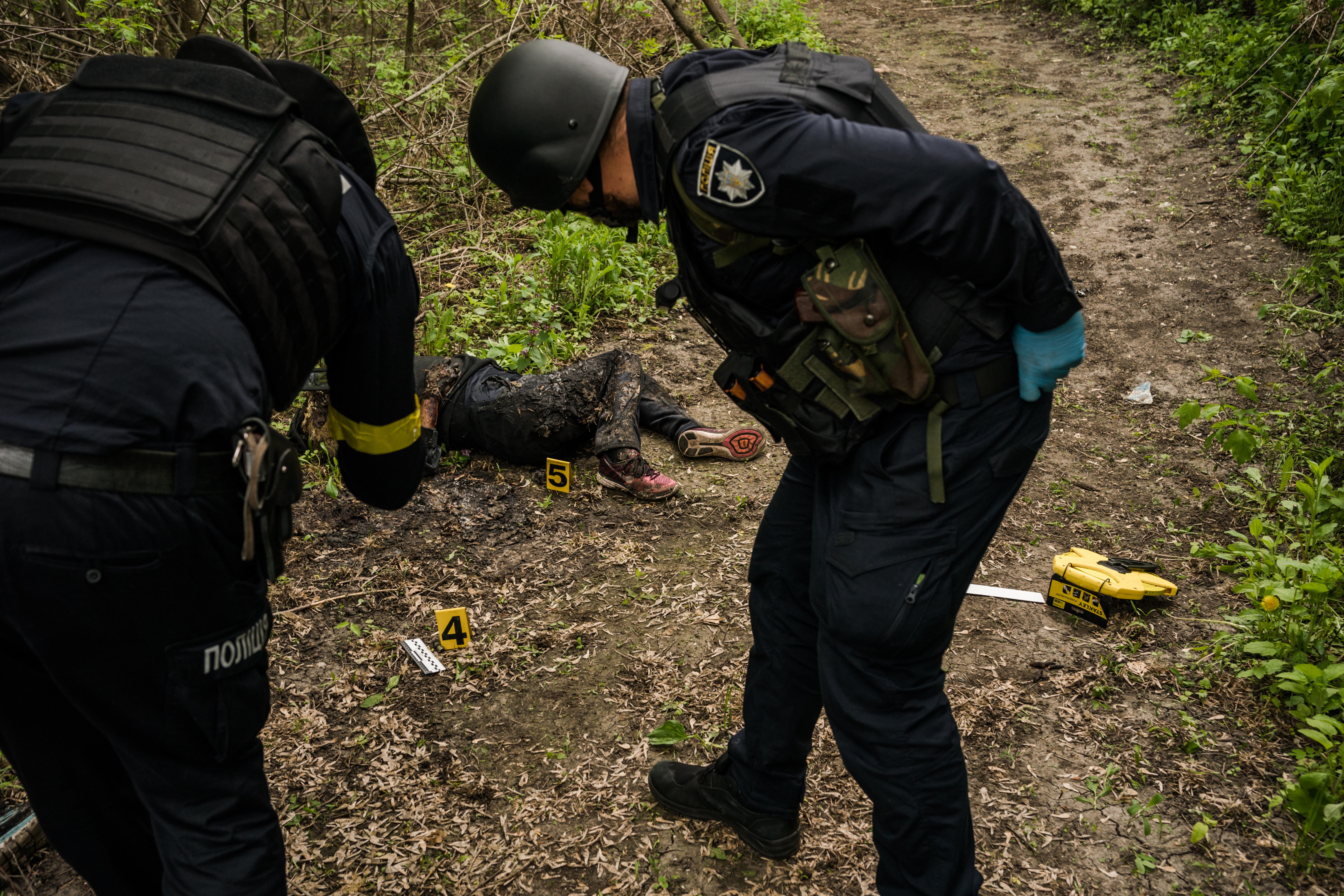
Synyehubov is less optimistic. He doesn’t anticipate that Russia will pull back its troops entirely, as it did in the suburbs around Kyiv and in the Chernihiv region in the north. If it did, he said, that would enable Ukraine to send more forces to strategically important Izyum, a town on the southeastern edge of Kharkiv that the Russians must capture if they plan to encircle Ukraine’s military in the eastern Donbas region.
He has urged residents not to try returning to their homes in villages that were occupied by Russians until recently.
In Tsyrkuny, the military didn’t even let the police in until Tuesday. Before departing for the village, Serhii Bolvinov, the head of Kharkiv's police investigation department, warned his investigators and forensic scientists: “Do not step on the grass.”
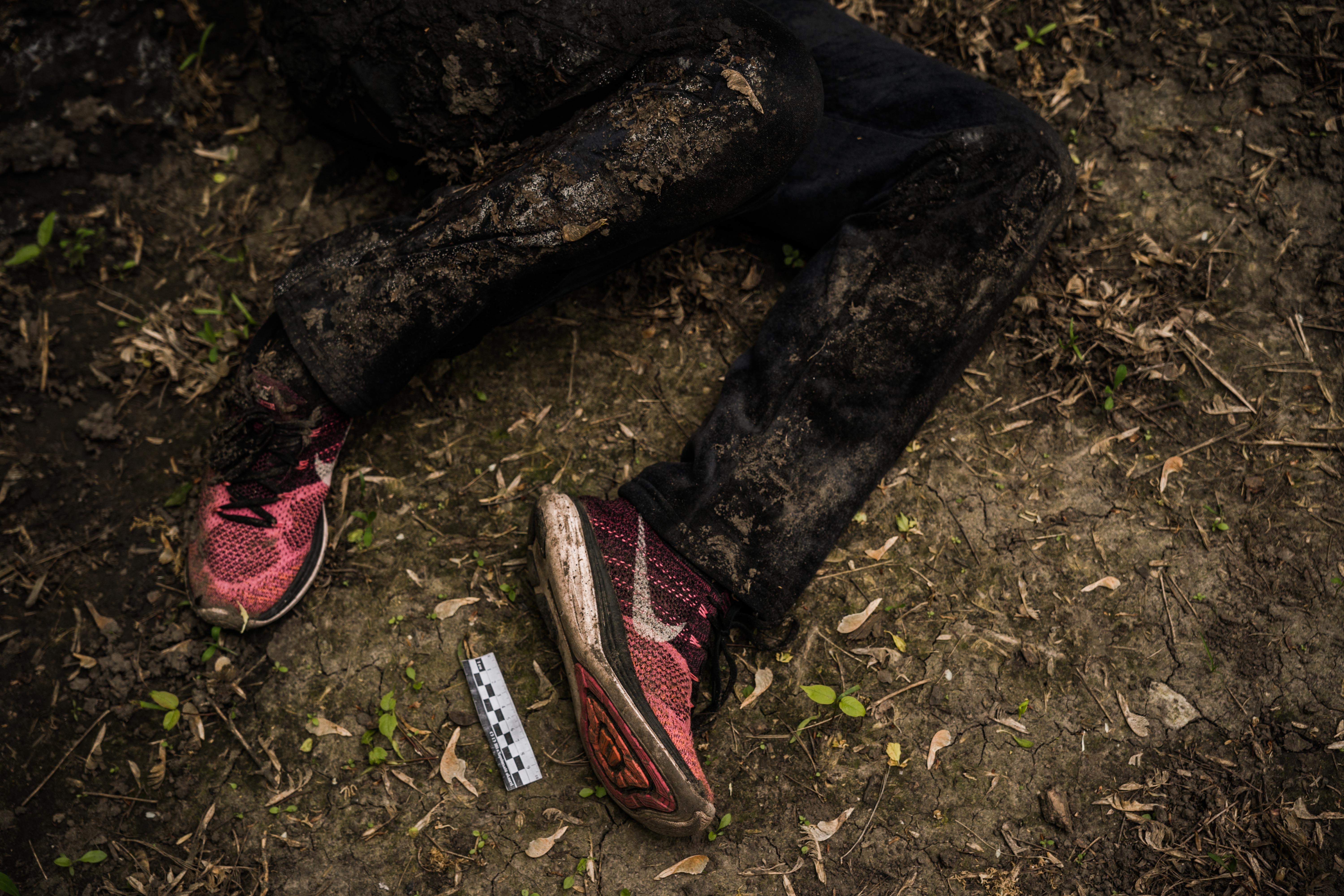
“Look for wires at your feet – and higher, too,” Bolvinov continued, speaking to his investigators and the journalists accompanying them. “Look for them in every direction. And just be very careful.”
Imagine an episode of CSI – and there’s a war going on, too. The police had a rough understanding of where the corpses were located, but just getting to them took hours as sappers – technicians who clear mines – made sure the path was safe. The booms of incoming artillery sounded closer and closer, and one soldier warned the investigators to move to somewhere less exposed – except that the only place to go was into the forest, where there was the danger of hidden explosives.
While the de-mining crew was still carefully moving detection wands through the grass and spiking them into the ground, Oleksandr Sahno walked by. He had spent nearly every night in a neighbour’s basement during the Russian occupation. Now he was hoping to finally be reunited with his son in the city and was on his way to a meeting point.
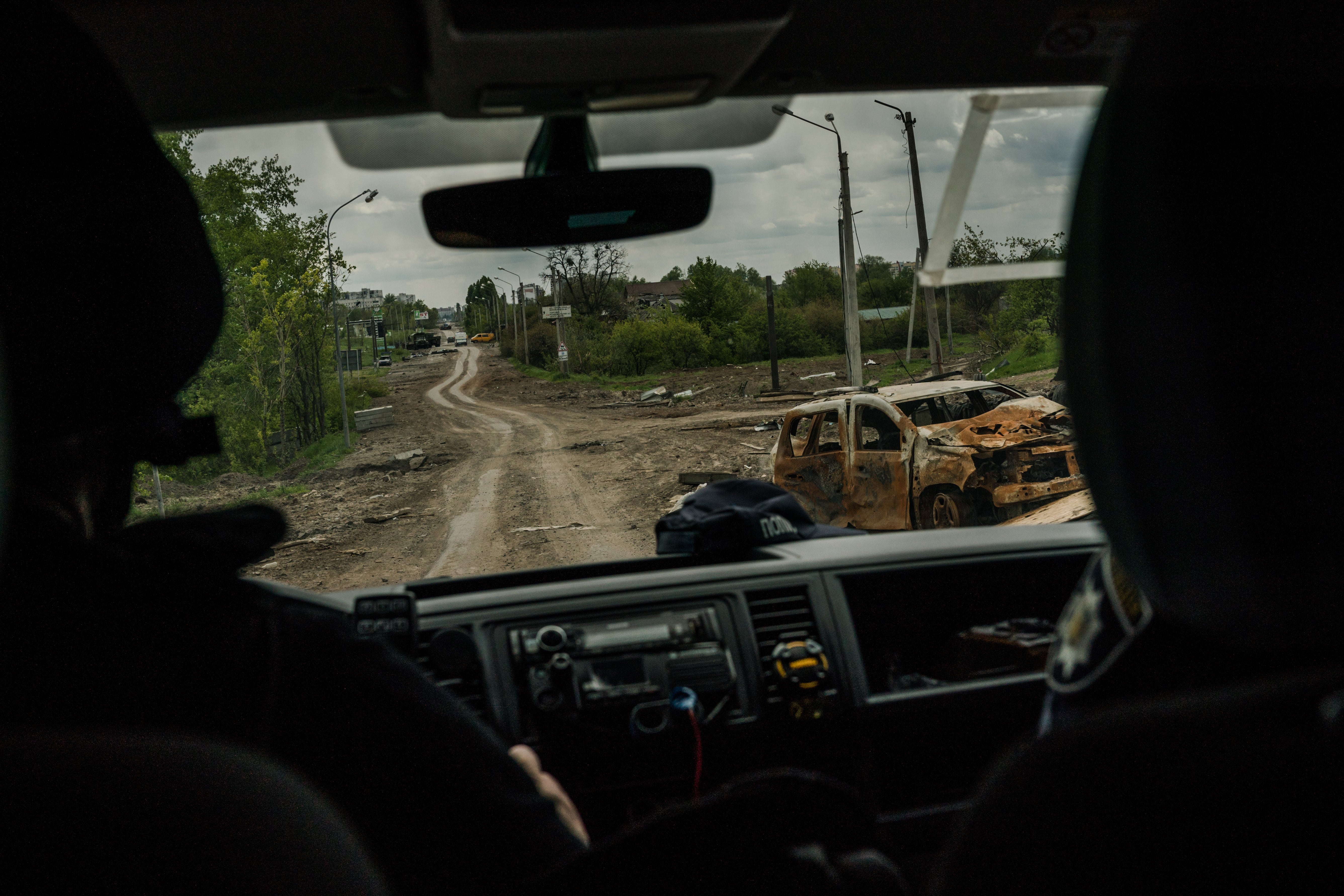
The police asked him to stay near their car until they were finished working; they couldn’t risk his running into Russian soldiers on the way and revealing their positions. Sahno reluctantly agreed.
The scariest part of living under occupation, he said, was the last three days of it, when Ukrainian forces moved closer and firefights broke out in the village. Sahno had been working in his potato garden then, and an artillery shell landed just 150 feet away. He clumsily ran for cover as the roof of a house on his street collapsed in front of him.
“I never doubted our guys would come,” he said. “If anything, I didn’t think it would take so long.”
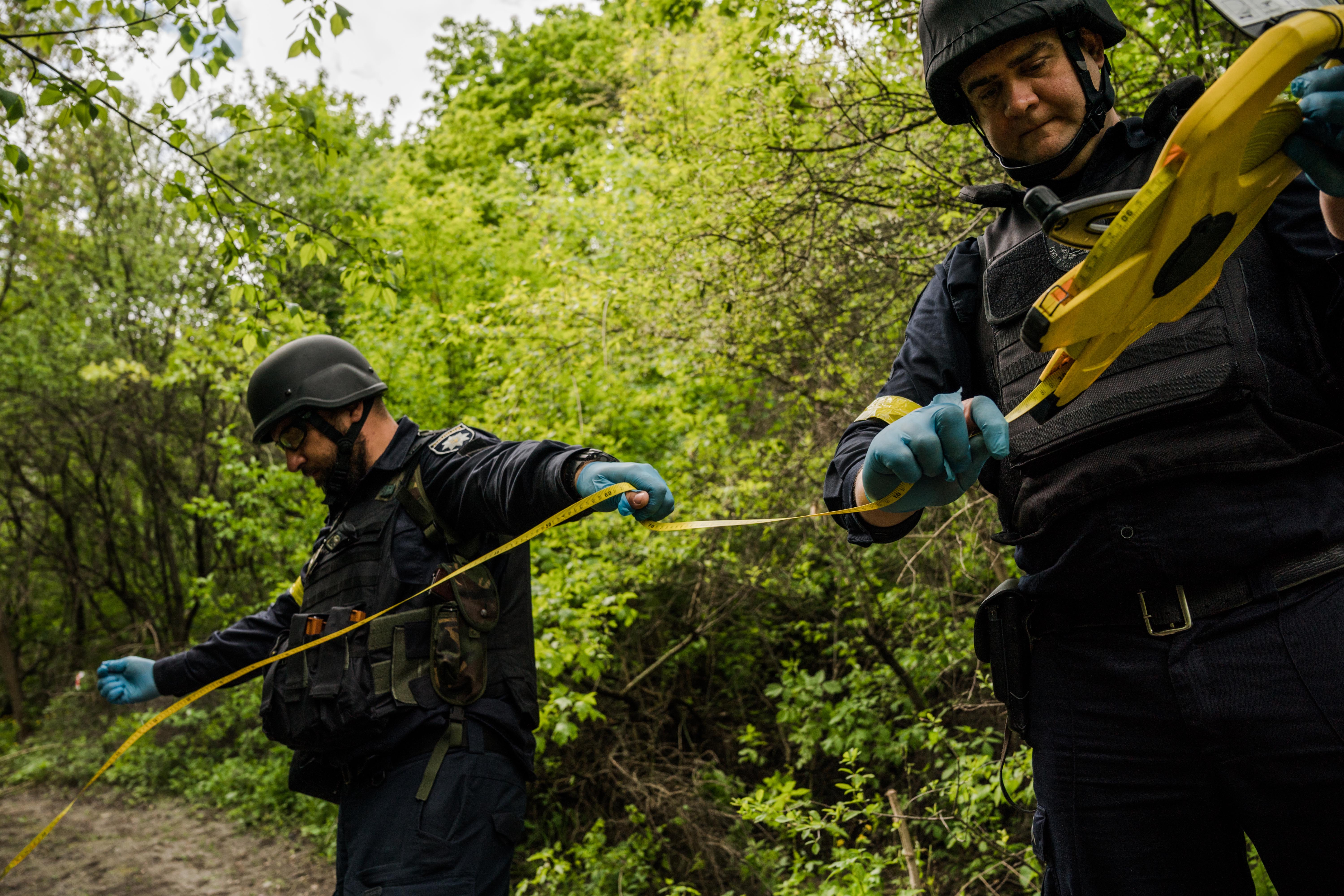
After nearly two hours, a safe path had been created for the forensic investigators to collect evidence around the corpses. Without touching the bodies, they took photographs, observing that the women were wearing leisurewear and didn't have any bags with them. They had probably been out for a walk when they hit a tripwire rigged to an antipersonnel mine.
The back of one woman's head had been completely blown off, and her face was charred and mangled. The bodies of two dogs were also discovered; they might have triggered a different mine later.
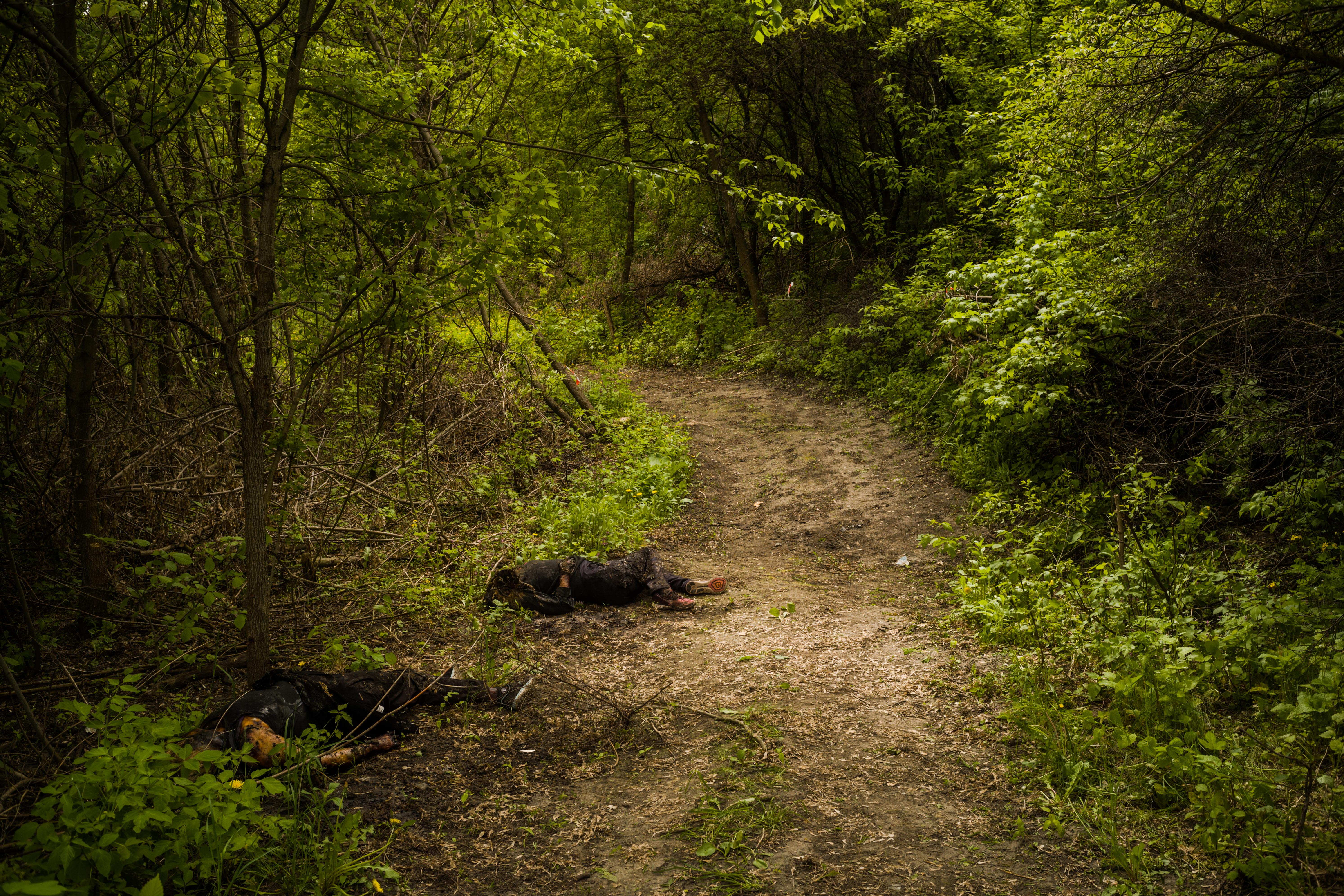
Placing down numbered yellow markers, the police took photos of the fragments of the two land mines they discovered, a MON-50 and POM-2. They bagged the pieces and some wire to eventually hand over to Ukraine's Security Service – evidence for future war-crimes cases. The weapons can be used to identify who committed the crimes, as can any traces of DNA on them.
Andrii Sharnin, the deputy chief of Kharkiv's police investigation department, said Ukraine is steadily creating a database of Russian soldiers’ DNA – either through the Russian corpses the country has recovered or the troops it has captured.
“Eventually – whether in two days or in two years – we’ll be able to determine the specific person who planted this mine,” Sharnin said.
Nervous about how long they'd already been at the site, the investigators hurriedly packed the evidence into their van and sped back toward the city. Oleksandr Bogdanov powered on his phone for the first time in hours. He’d been the one examining the bodies closest – not that his mother needed to know the dangerous places his job takes him these days.
“Sorry, I didn’t have good service in the bunker,” he told her in a call. “We’ve just been doing paperwork down here.”
The Washington Post’s Wojciech Grzedzinski and Sergii Mukaieliants contributed to this report.
© The Washington Post
Join our commenting forum
Join thought-provoking conversations, follow other Independent readers and see their replies
Comments



Bookmark popover
Removed from bookmarks